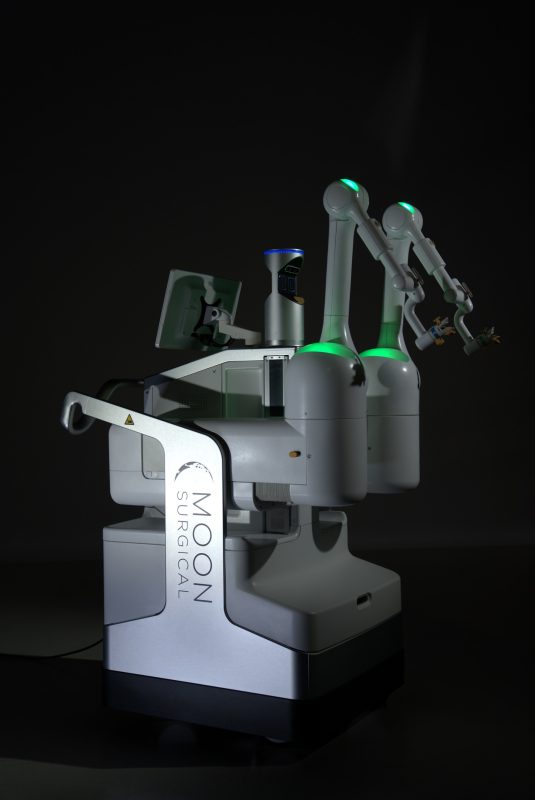Advancements in staging and personalized treatments have helped improve lung cancer survival rates, but low screening rates and health inequities among eligible patients remain as significant barriers to treatment, according to the recently published 2022 State of Lung Cancer1 report from the American Lung Association.
During Lung Cancer Awareness Month, Olympus Corp. of the Americas and the American Lung Association are spotlighting potentially lifesaving lung cancer screening and the diagnostic tools available to help guide treatment. Nearly 237,000 new cases of lung cancer are projected to be diagnosed this year, and it remains the leading cause of cancer deaths in the United States, according to the 2022 State of Lung Cancer report.
The American Lung Association reports progress in some key areas, including an 11% decrease in new cases of lung cancer nationally over the last five years and an increase to 25% of the average five-year survival rate nationally. The five-year survival rate for lung cancer, however, remains one of the lowest because cases are frequently diagnosed at later stages.1
“It is very encouraging to see a decrease in lung cancer cases coupled with an increase in the survival rate. While we are making steady progress in getting more eligible patients screened and making significant advances in diagnosis and treatment, we must continue emphasizing the importance of catching this disease early through preventive screening,” said Dr. Albert Rizzo, Chief Medical Officer for the American Lung Association. “Beyond the statistics and trends, the message we need to convey to patients is simple: lung cancer screening saves lives.”
About a quarter of lung cancer cases are diagnosed at an early enough stage when the five-year survival rate is at its highest (61%), highlighting the importance of preventive screenings.1 Screenings involve a low-dose CT (LDCT) scan, a simple and quick process that creates two-dimensional, cross-sectional images as a patient moves quickly through an open, donut-shaped scanner. Patients are encouraged to discuss a screening with their doctor if they have a history of smoking.
Last year, the U.S. Preventive Services Task Force (USPSTF) amended its lung cancer screening guidelines to incorporate more at-risk patients. The USPSTF now recommends annual LDCT scans for people ages 50 to 80 with a 20-year pack history who are either current smokers or who have quit within the last 15 years. A pack-year is determined by the number of packs of cigarettes smoked per day multiplied by the number of years the person smoked: 20 pack years equals a pack a day for 20 years or two packs a day for 10.2
About 14 million Americans meet the guidelines but less than 6% of those at high-risk were screened in 2021.1
Dr. Gerard Silvestri, of the Medical University of South Carolina, recently published a study analyzing data of those who underwent LDCT scans under the previous USPSTF guidelines. The data showed that those who underwent a scan were more likely to be female and current smokers. Men, younger eligible patients and former smokers were less likely to be screened, and the study also showed that adherence to follow-up scans 12 months after the initial screening was “poor, potentially limiting screening effectiveness.”3
Women may be more likely to be screened for lung cancer because they are accustomed to utilizing other preventive screenings such as those for breast and cervical cancer, according to Silvestri. Older patients are more likely to be screened because they have uniform health insurance such as Medicare compared to younger patients, and current smokers might be easier to identify for screening as opposed to former smokers, who are not easily captured in the electronic medical record, he said. Silvestri, a paid consultant for Olympus, added that former smokers may not even realize they are eligible for screening.
The 2022 State of Lung Cancer report also highlighted healthcare disparities among various racial groups, all of which showed lower rates of early diagnosis, treatment and five-year survival rate following diagnosis. Nationally, 21% of all lung cancer patients did not receive any treatment after diagnosis for various reasons, and new cases, screening rates and access to medical coverage vary from state to state.1
Advancements in detection and diagnosis, such as endobronchial ultrasound-guided transbronchial needle aspiration (EBUS-TBNA) and electromagnetic navigation bronchoscopy (ENB) have helped lay the groundwork for targeted cancer treatment such as immunotherapy. The technology helps pulmonologists locate nodules and lymph nodes and collect the tissue samples needed for the personalized, targeted cancer therapy provided by immunotherapy.4
Olympus supports the American Lung Association in its efforts to raise awareness of the importance of lung cancer screening. Once screened, patients may breathe easier knowing there are next steps to help address cancer before it is too advanced.


